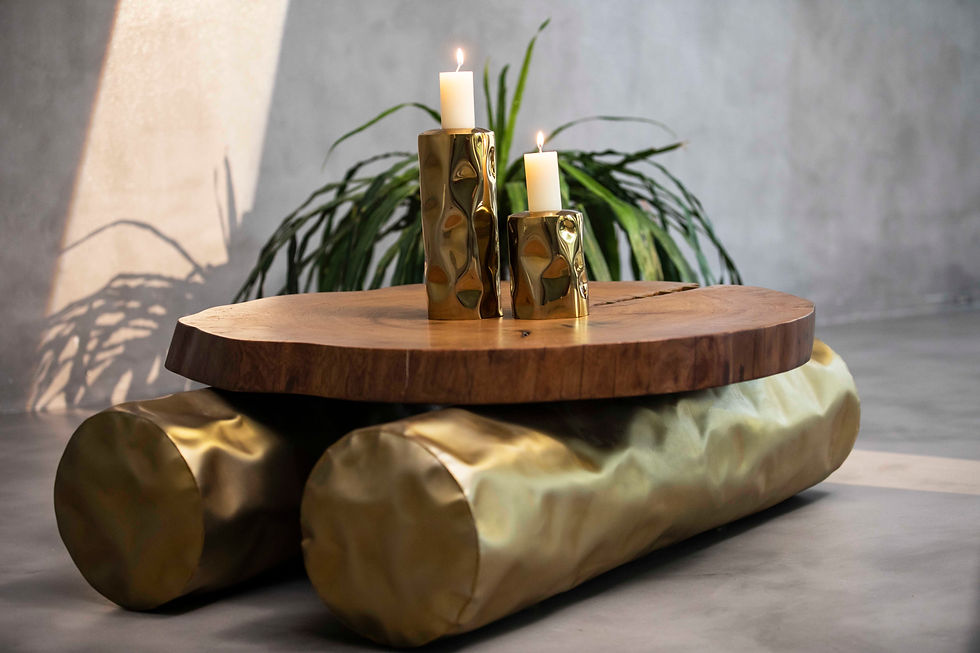How Sculptural Furniture is Shaping New Interior Design Trends
- Guest Writer
- Apr 20, 2023
- 3 min read

Guest Article By Aroosh and Nitush Mahipal- Co-founders, White Domus

Sculptural furniture has been a part of human culture throughout history, with examples ranging from ancient Greek mythological sculptures to modern designers' abstract benches. As a design trend, sculptural furniture embodies a focus on form that celebrates the beauty of the human-made object. It is a way to elevate furniture beyond its function as a helpful piece and into art.
In recent years, sculptural furniture has become increasingly popular to express one's style and add a unique touch to interiors. The trend is characterized by bold, often oversized forms that make a statement in any space. In addition, as our homes become more reflective of our tastes and lifestyles, sculptural furniture offers a way to embrace a more artful, curated approach to decorating.

Sculptural furniture is not just visually appealing but also offers a level of function compared to traditional furniture pieces. Yet, despite their artistic flair, these pieces remain practical and usable, offering the best of both worlds to homeowners and designers alike. From coffee tables and chairs to bar stools and benches, sculptural furniture has entered every corner of modern interior design. One of the best examples of sculptural furniture in action is the Diamante Bar from White Domus which features a stunning crushed texture that interacts with surrounding colours, creating a genuinely captivating ambience.
The most significant appeal of sculptural furniture is its ability to stand alone as a statement piece or to work in harmony with other elements within a room. In addition, since sculptural furniture is often minimalist in design, it can be an antidote to cluttered spaces. Adding a few artful pieces to a room can instantly create a sophisticated and uncluttered feel.
One of the main challenges in incorporating sculptural furniture into a space is balancing the piece's scale with the other elements in the room. For example, large, imposing sculptural pieces work well in grand openings but can feel overwhelming in smaller spaces. Similarly, a room with much visual interest, such as a patterned wallpaper or colourful art collection, may require a less imposing sculptural piece to avoid competing with the other elements.

When selecting a sculptural piece for a space, it is essential to consider the materials used in its creation. While many contemporary sculptural pieces are made of metal or other manufactured materials, natural materials such as wood or stone can create a powerful impact. In addition, using raw materials is a nod to our connection to the Earth and can evoke feelings of warmth and comfort in space.
In addition to adding visual interest to a room, sculptural pieces can also be used to create functional pieces of furniture, such as bookshelves or tables. These pieces often offer unexpected lines or shapes that make them stand out from traditional pieces of furniture. For example, a bookshelf might be composed of overlapping, wall-mounted squares that create shadow and depth, while a coffee table might feature a twisted form that doubles as a seating option.

While some may worry that sculptural furniture is too bold or trendy to withstand the test of time, many designers believe that the trend is here to stay. As we move towards a more minimalist, pared-down approach to decorating, sculptural furniture offers a unique way to create impact and interest within a space. Moreover, the ability to create functional pieces with sculptural elements means that the trend remains practical and sustainable. The Diamante Bar, Tronco Bench, Granada Coffee Table, and Cone Side Table by White Domus are outstanding examples of sculptural furniture's impact on modern interior design.

In conclusion, sculptural furniture is a trend shaping the current design landscape. It offers a way to elevate furniture beyond its utilitarian purpose and into the realm of art, creating functional pieces that are also visually interesting. With a focus on bold forms and natural materials, sculptural furniture allows homeowners to add a unique touch to interiors while embracing the trend towards a more minimalist approach to decorating. Whether a statement piece or a functional element, sculptural furniture can transform a room and create a feeling of harmony within the space.
Website: White Domus





Comentários